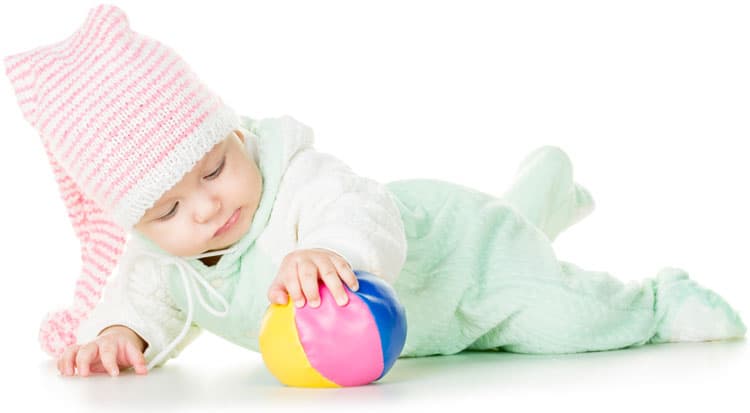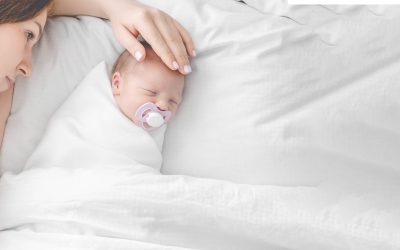Your Baby’s Development At 6 To 9 Months
There is an expression that goes “the days are long but the years are short”.
As you enter the second half of baby’s first year, those words likely ring true to you as you watch your little one start to explore the environment around them.
Before you know it, you’ll need to start baby-proofing your house! Here’s what to look for and encourage in the coming months:
The Seventh Month
At seven months old, baby is busy perfecting the skills they have learned over the last couple months. On their tummy, your little one should be able to stabilize themselves on one hand while reaching up with their other hand. You may see them start to pull themselves forward in an “army crawl” or start to get on to their hands and knees.
However, if your baby did not enjoy tummy time when they were younger (or even to this day), chances are their skills haven’t had a chance to develop to this level. If this is the case, don’t stress. Continue to encourage more tummy time as you are able and try to place them in kneeling if possible. This will help develop weight bearing through the knees and promote hip strength and pelvic stability, which are precursors for crawling.
As I mentioned last post, I like to work on kneeling by taking 2 legs off of an activity table and putting it down like an easel. Then place baby on to their knees and help support them in this position while they play. Just make sure that their bum stays on their heels or above, not in between (no W sitting!). In sitting, your baby should now be able to reach for toys, pass them hand to hand, and rotate to either side without toppling over.
The Eighth Month
Around 8 months is usually when baby starts to get on the move! But please remember, this is a guideline and not a hard and fast rule.
The typical age range for developing crawling is between 7-11 months however, technically crawling is not a developmental milestone. Don’t get me wrong – crawling is a fantastic skill which contributes to bilateral coordination, cross-patterning, balance, organizing the brain, core strength, weight bearing through the hands…the list goes on. But ultimately if your child does not crawl – IT IS OK.
There are other ways to work on the benefits that crawling provides, and as long as your child has a way to get from point A to point B (even if they jump right to walking) they are on track. For a list of different types of crawling and how to encourage its development, click here.

The Ninth Month
Once your baby has established their mode of locomotion, another group of skills to keep an eye out for are transitions. I often will work with babies who are great on their tummies, great in sitting, and great up on their feet – but have no clue how to transition from one position to the other.
This is usually just a result of not having the opportunity to explore the movement, although sometimes can be a motor planning issue. If you see your baby struggling to perform these transition movements, my best advice is to get down on the floor and perform the transition yourself so that you can see what movements are required.
Then, the next time your little one is trying to get from their tummy into sitting and is getting frustrated by it, rather than just picking them up and moving them try and help them into sitting by doing those movements. For example if they are on their tummy, help them to go on hands and knees and push back into sitting. Another skill we start to see at this age is standing.
At 9 months, baby should be happy to be placed in standing and bear nice weight on their feet. They may even bend their knees and bounce up and down (with your support of course). They also may start to pull to stand on their own too!
To encourage this, play in high kneeling at a chair or a couch and place an object in front of them just out of reach. As they try to grab for the toy, help them by bringing one leg up so they are in a half-kneeling position and then encourage them up into standing by supporting their hips. If you’ve got a real motor baby you may even start to see some cruising at this age as baby starts to take steps sideways at the couch or coffee stable.
Stay tuned for the next 3 months – more on standing, cruising, walking!











